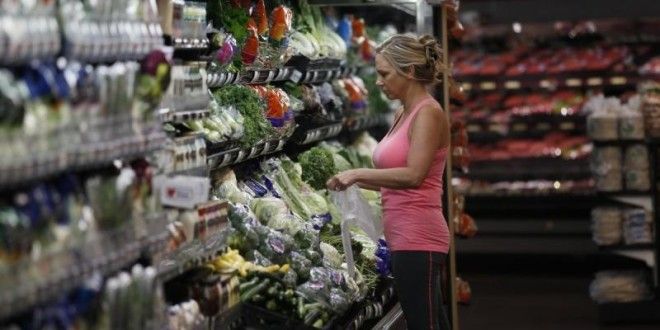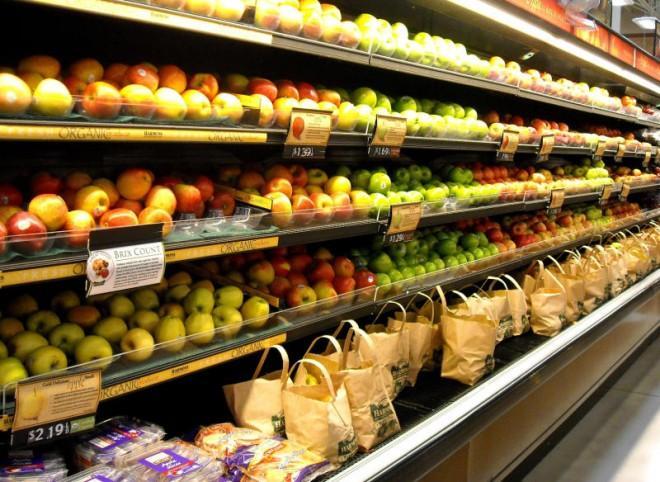Danielle Wagasky, who stretched $14,000 a year to cover her family's needs for five years, would know.
After adding up all of her purchases one month, she was shocked to find out that she was spending $800 on groceries for a Nevada-based family of four. This wake-up call inspired her to get smart about grocery shopping, and she managed to cut her expenses in half.
"The grocery bill is one thing you have absolute control over," she writes in her book "Living a Beautiful Life on Less."
"You are not locked into a contract like you are with cellphone or rental agreements. You are not stuck with a monthly rate like you are with the internet and cable ... A grocery bill is different, and that's why it's the most important expense to learn to control."
Here's how she learned to control her grocery bill, and how you can too:
Shop less often.

The less time you spend in the grocery store, the less you'll spend, Wagasky preaches.
"Think about the last time you just went into the store for a few items," she writes. "Did you buy only those few items you were in need of, or did you spend a bit more? Did you impulse buy because of the lovely end cap display of goodies or because that deal was just too good to resist? It happens. Shopping less often takes away the temptation to do this."
Wagasky shops just once a month, but don't feel the need to instantaneously change your shopping habits. Start small, she encourages: "If you are a three-times-a-week shopper, try to go only once this week." Eventually, you can work your way up to once a month.
Bring a calculator.

Set a target budget for each trip to the store, and then to help stick to it, bring a calculator along — or your smartphone — and tally up your expenses as you shop.
"When you go through with a calculator, it is amazing the change that takes place," Wagasky writes. "You are more aware of how much each item is adding up. You suddenly weigh the options a bit more with name brand versus generic. You think twice about adding all that candy into the cart just because it looks good. It makes you more conscious of what you are tossing in."
Pay with cash.

This tactic may make you cringe, but keep an open mind, Wagasky encourages. Going cash-only when you head to your local supermarket forces you to stick to your budget, especially if you leave your cards behind and only bring the amount of money you've allocated for groceries for that particular shopping trip.
"At the beginning of each month or pay period, get out the set amount that you have budgeted for groceries in cash," Wagasky instructs. "Keep this cash in an envelope. This envelope holds all your precious dollars to buy food for your family this month. Using cash will encourage you to stay within your set budget."
Not only will you be forced to remain at or under budget, you'll also become a more conscious spender and will be more aware of exactly what you're putting in your cart, Wagasky says. If cash-only works for you, you can take this approach to more aspects of your life than just grocery shopping.
Shop the ads and use coupons.

"Each week, grocery stores send out ads telling you what items they have on sale," Wagasky explains. "Don't toss these in the trash! They are crucial for your grocery planning."
Circle the items that are on sale that you'd like to purchase so you don't forget.
Additionally, take advantage of coupons, which can add up in the long run. "Coupons can be a great way to keep grocery totals down, allowing you to get more for your money," she writes. "Newspapers are not the only place to get coupons. With a little bit of research, you'll discover that there are dozens of coupon sites, phone apps, and other tools to help you succeed."
Shop the perimeter.

"Many grocery stores have a similar layout. You will find the produce, dairy, and meat department on the outside of the store, while most of the prepackaged snacks, crackers, canned goods, and baking stuff are located toward the center of the store," Wagasky explains.
Stick to the outside of the store and "shop the perimeter," Wagasky encourages: "Not only does it help you control your budget, but it also helps assure that your family is eating better because the fresh foods found in the perimeter of the store tend to be healthier choices."
Buy less meat.

A simple way to trim your grocery bill is to buy less meat. "Try substituting beans and wheat berries for meat in your favorite recipes," Wagasky suggests. "Enchiladas, spaghetti, and casseroles taste just as good with the meat omitted."
If you have a harder time parting ways with your meat, start by establishing one meatless day a week. Eliminating meat just once or twice a week can make a significant difference in your grocery bill.
Go generic.

Go generic whenever possible. It will save you money.
"There are some things my husband and I have learned truly taste the same as the name brand, while others can't compare," Wagasky writes. "The only way to know if you'll like a product is to try it."
Her pro-tip when shopping for generics: "Make sure to look up and down the shelves of food. Most grocery stores put the name brand items at eye level. They want that to be what the consumer focuses on. Generic brands are usually on the bottom shelf or the top shelf, so keep those eyes open."
Stock up seasonally.

Sometimes, when you buy is more important than where you buy.
"Buying seasonally is a great way to save and build up a stockpile," Wagasky writes. "Each month grocery stores offer certain sales on items."
For example, in the summer, barbecue items will be at rock-bottom prices, making it the perfect time to stock up on chips, crackers, ketchup, relish, mayo, and mustard.
Along the same lines, seasonal fruits and vegetables are cheaper, and they also taste better. Consult this handy graphic to determine what's in season.
Eat produce in order.

Produce can be tricky to shop for, as their expiration dates are not very forgiving. To make fruits and veggies last significantly longer, eat them in order, starting with the things that will go bad the soonest.
Here's Wagasky's guide:
First: bananas, berries, cherries, kiwis, avocado, spinach, lettuce, and grapes
Second: tomatoes, mango, peaches, pears, melon, apricots, and zucchini
Third: cucumbers, pineapple, and pomegranates
Last: carrots, potatoes, celery, apples, grapefruit, and oranges
Go homemade.

"Over the years, I have learned that the more we can make at home, the better off our grocery budget will be," Wagasky writes. "In our home, we try to make as much from scratch as possible."
One item she's saved significantly on by going homemade is bread, a staple in her household: "If I were to buy bread from the store, I would be paying over three dollars per loaf. Thirty-six dollars a month is a hefty fee to pay for something I can make in minutes for one-third the cost."
Wagasky also chooses to make homemade granola bars and trail mix rather than spending on prepackaged snacks, which tend to be pricey and unhealthy.

